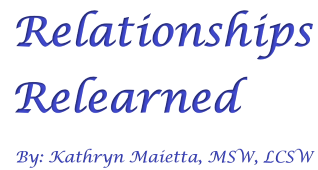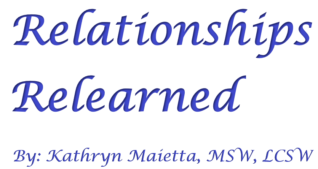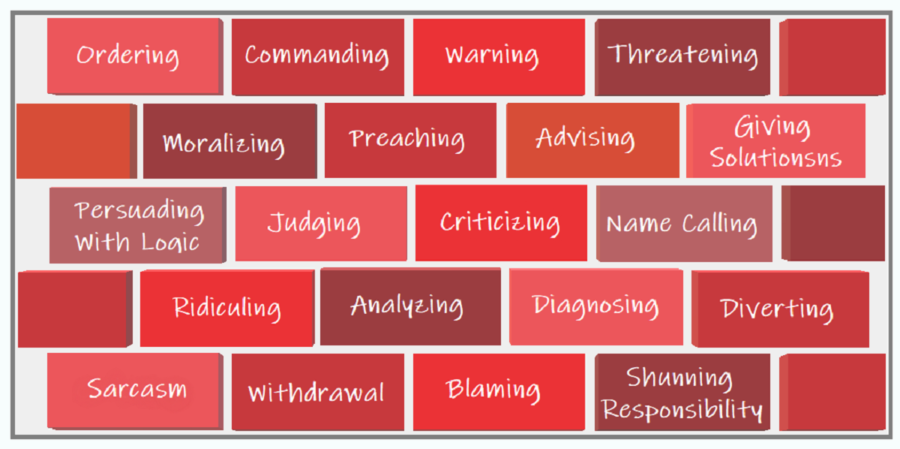Communication –
Communication with other people is based on sending and receiving messages. These messages are traditionally sent and received based on a combination of:
• the spoken word
• body language, for example, eye rolling or crossing your arms
• tone of voice, for example, a harsh tone or a sarcastic tone.
There is another component to take into consideration in your communication. The manner in which you speak to others can be a barrier. You may have the best of intentions in what you are saying, but the effect can be anything but supportive and relationship enhancing. In communication, effect it essential.
Barriers to Communications
The following are ten examples of barriers to communication. Are you using any of these patterns? Being able to recognize when you are using destructive patterns is the beginning of a process to enhance your communication with others. For more information on communications, it may helpful to read my article: Five Roadblocks to Effective Communications
- Ordering, commanding
When you are ordering or commanding someone to do what you want them to do, you are producing fear in the other person, especially if the other person is a child.
Effect: When someone is “ordered” to do something, one of the typical responses is active resistance. It also invites “testing” or challenging of the command.
Example: “You must…”, “You have to…”,
- Warning, threatening
When you are warning or threatening someone you are using dominance to obtain what you want. While the other person may do what you want them to do in front of your face, the minute you turn your back there is a good chance the other person will do whatever they want to do.
Effect: Warning and threats produce fear and invites “testing” of the threat.
Example: “If you don’t, then…”, “You’d better, or…”
- Moralizing, preaching
When someone is moralizing or preaching, they create a sense of obligation in the other person.
Effect: A possible reaction to moralizing is a guilt response. You are giving the other person the impression you do not trust their judgement.
Example: “You should…”, “It is your responsibility…”
- Advising, giving solutions
When you are “advising” or telling someone how they can solve their problems, you are implying the other person doesn’t have the intelligence or common sense to solve their own problems.
Effect: This tends to cause feelings of dependence on the advice giver, or resistance to asking for input in the future.
Example: “What I would do if…”, “Why don’t you…”
- Persuading with logic
When you are trying to persuade someone with logic, what you are really trying to do is persuade the other person into your way of thinking (right or wrong).
Effect: It tends to provoke a defensive position in the other person. It also invites counter arguments to your “logic”.
Example: “Here is why you are wrong…”
- Judging, criticizing
When you are judging or criticizing someone else for a situation, you are implying the other person is incompetent or exhibits poor judgement.
Effect: This tactic shuts down communication because the other person doesn’t want to receive further criticism or be judged.
Example: “You are not thinking maturely…”,
- Name calling, ridiculing
Name calling is always destructive to communication. Name calling and ridiculing someone else can cause the other person to feel unworthy and unloved.
Effect: It can cause devastating, long-lasting negative effects on the person being ridiculed. It speaks to a lack of compassion.
Example: “Crybaby…”, “Okay, Mr. Smarty…”
- Analyzing, diagnosing
When you are analyzing every word someone says, it can feel threatening for the other person. It only encourages the other person to “close-up”.
Effect: The other person can feel trapped and reluctant to share information. The implication is that you are “the smart one”, the one who has all the right answers. They can feel trapped.
Example: “What’s wrong with you is…”
- Diverting, Sarcasm, Withdrawal
One of the ways of deflecting communication is to divert the conversation to something else, to use sarcasm to shut down discussion, or to emotionally withdraw from the conversation altogether.
Effect: This implies life’s difficulties are to be avoided rather than to be dealt with.
Example: “Let’s talk about pleasant things…”
- Blaming, shunning responsibility
When you are blaming someone else for a situation, you are implying the other person is responsible for difficult situations. Blaming others involves making someone else responsible for the choices and decisions that are actually your own responsibility. Abate Counselling – 15 Types of Distorted Thinking
Effect: Blaming someone else can result in that person feeling defensive, resentful, guilty and/or sad.
Example: “If you had just listened to me…”
It is important to look at how you interact with others. Are you more likely to use any of these barriers with family and friends, but not with a supervisor or co-workers?
Are there ways you talk with others that destroy communication? By analyzing, blaming, judging or persuading with logic, you are shutting down communication with other people. This is especially destructive if the person you are attempting to communicate with is your significant other or your child.
Recognizing you are using these tactics and techniques is the first step to making changes in how you communicate to others.
Quotes
Giving Advice: “There is a time to provide advice and offer an opinion, and there is a time not to. Don’t be too quick to offer unsolicited advice. It certainly will not endear you to people.”
Harvey Mackay (1932- )
Sarcasm: “Sarcasm is like cheap wine – it leaves a terrible aftertaste.”
Dana Perino (1972- )
Judging: “Don’t judge me by my past, I don’t live there anymore.”
Mother Theresa (1910-1997)
With warmest regards,
To be notified of new posts like What are 10 Simple Barriers to Communication?, please enter your email address and click on the Subscribe button.









